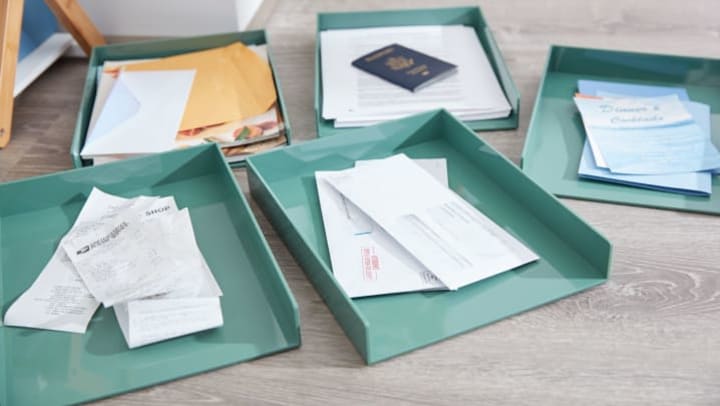In our recent blogs, we outlined an overall strategy for getting organized and got you started with a first step of clearing out the clutter. If you’ve taken that first step and disposed of any papers or files that were deemed unnecessary or duplicative, you’re off to a good start. Hopefully, at this point, you’re looking at a much more manageable pile of papers or files. The next critical step towards getting it all organized is to create a system of categories and a place for housing everything.
Whether you’re dealing with piles of mail or electronic files, you’ll most likely end up with something like a set of folders, one for each category. The size of these reservoirs and the number of categories will probably depend largely on your loved one’s net worth. For example, if there are vast financial assets and accounts, you might need to dedicate an entire box or file drawer to a financial category. Further, you might need several subcategories in that realm. On the other hand, if your loved one has a modest amount of savings and it’s all held in the same place, you might only need one manilla folder labeled “Financial.”
As may have been the case for clearing out the clutter, getting started with your categories might be the hardest part. It’s common to hesitate before categorizing something as if you won’t be able to change it later. To overcome this hesitancy, try getting started with a pad of Post-It notes. Begin grouping items together and create a name for that category once you’ve accumulated more than a few. Jot down the category name on a Post-It note. This way, you’ll see the category name as merely a placeholder that you can easily change at any point. In fact, you might even use a pencil rather than a pen as a way to give yourself a greater feeling of flexibility. Continue working through the piles, grouping similar items together, and labeling. After a while in this process, the right names for categories should become obvious. At that point, you can create your permanent categories.
Once you’ve got your permanent categories, create your folders or other reservoirs with the proper labels and begin sorting through your existing materials. Note that, thus far, we have only focused on that which you have in front of you. Once you have begun filing things away where they belong, you might start to realize that you’re missing certain items. For example, if you’ve got a folder of legal documents and you notice that you don’t have your loved one’s Will, you’ll want to make a note to get a copy. Don’t try to do everything at once. Focus on organizing what you have and make a list of things to track down at a later time.


